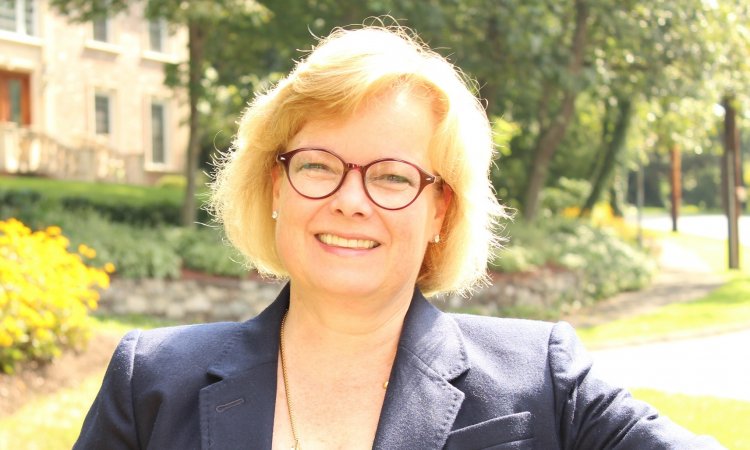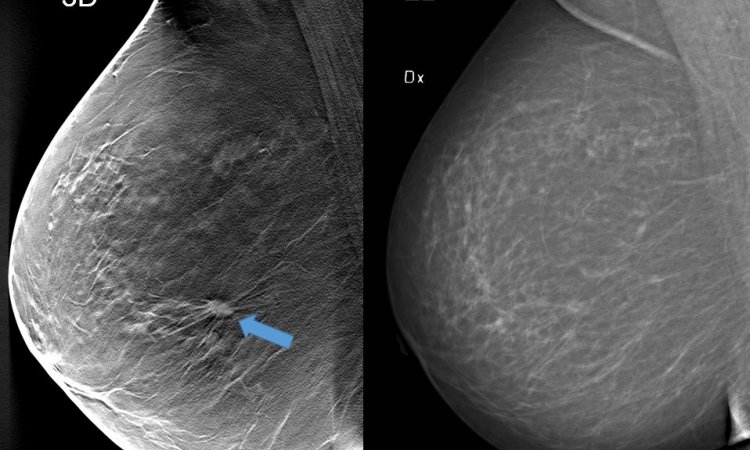Article • Personalized medicine
Time to consider risk-based breast cancer screening protocols
In the emerging era of personalized medicine, risk-based breast cancer screening protocols may be better than the one-size-fits all approach. It’s time to consider adopting them, Jack Cuzick, Ph.D., said in the President’s Address of the 2021 Society of Breast Imaging/American College of Radiology Breast Imaging Symposium.

Source: Credit: Wikipedia/ CC BY-SA 3.0; Attribution: The Royal Society
Professor Cuzick, director of the Wolfson Institute of Preventive Medicine in London and head of the Centre for Cancer Prevention at Queen Mary University of London, is a pioneer in the development of breast cancer risk assessment models. He co-developed the Tyrer-Cuzick (IBIS) breast cancer risk evaluation model. This tool assesses the lifetime risk of breast cancer and identifies women at greater than average risk who could benefit from supplemental screening with breast ultrasound and/or breast MRI. The model, now in its 8th edition, calculates the likelihood of a woman carrying a gene predisposing to breast cancer in addition to the BRCA1/2 genes, as well as breast density, age at first child and menopause, body mass index (BMI), and benign disease such as lobular carcinoma in situ.
“Breast cancer is the epidemic of our century, and is still rising rapidly. Over 2.1 million new cases were diagnosed in 2018, compared to about 525,000 in 1975 and one million in 2000,” he said. Mammographic screening programs in most countries are based on clinical trials conducted at least 20 years ago, and do not take into account the heterogeneity of the breast cancer subtypes and of the risk in population. Risk-stratified prevention could better optimize breast cancer screening resources and potentially increase detection rates.
Dr. Cuzick discussed in depth the elements of a variety of clinically validated risk assessment models for normal-to-high risk women in his lecture. These included family history of breast cancer, genetic variants that are primarily single-nucleotide polymorphisms (SNPs), polygenic risk scores (PRS), high mammographic density, reproductive and hormonal factors, and benign breast pathologies. He said that breast density and SNP scores are the strongest currently identified risk factors.
“High risk women would benefit from more intensive screening, such as breast MRI following mammography, and potentially prescriptions for preventive therapeutic drugs,” he said. “The intervals for mammography screening could be longer for low-risk women.”
He added, “Adequate information already exists to undertake risk-adapted screening for both high- and low-risk women, but structures and experience in collecting risk factors are needed. Screening facilities are the best places to conduct risk assessment, cautioning that it is critical to involve the public when planning a risked-based protocol.” Dr. Cuzick told European Hospital that in Europe and the U.K., the main issue is a country’s willingness to develop infrastructure to support this. He believes that adoption of risk-adapted screening will be very cost effective in the long term.
Dr. Cuzick is a member of the European Collaborative on Personalized Early Detection and Prevention of Breast Cancer (ENVISION). The organization developed a consensus statement, published in the November 2020 issue of Nature Reviews|Clinical Oncology, at a 2019 conference, which was attended by 119 delegates from 19 countries.
The consensus statement notes that “before risk-stratified prevention and early detection programs for breast cancer can be implemented, health-care providers and policy makers would need to plan the resources, build the infrastructure for population-wide risk assessment, develop policies and regulations to protect the public from stigmatization and discrimination, and provide support for informed decision-making of individual women regarding whether or not to participate in the screening programme. The implementation of risk-adapted breast cancer prevention and screening strategies does not constitute a simple change, that has a simple solution, but rather necessitates complex adaptive changes that require all stakeholders, scientists, health-care professionals, the lay public and policymakers to work together.”
Currently, two short-term prospective randomized controlled trials are underway evaluating the effectiveness of risk-stratified screening for breast cancer. MyPeBS is determining if risk-based cancer screening of women aged 40-70 years is non-inferior to the standard screening program currently offered in Belgium, France, Israel, Italy and the United Kingdom. WISDOM is a multicentre clinical trial in the United States comparing risk-based screening to annual mammographic screening in women aged 40-70 years. “These trial results are anxiously awaited,” says Dr. Cuzick.
Profile:
Jack Cuzick, Ph.D., is director of Wolfson Institute of Preventive Medicine in London and also head of Centre for Cancer Prevention. He was appointed the John Snow Professor of Epidemiology at Queen Mary, University of London, in 2014.
Dr. Cuzick is internationally known for his development of the Tyrer-Cuzick (IBIS) breast cancer risk evaluation model. His current interests are in cancer epidemiology and clinical trials, with special interest in prevention and screening. Dr. Cuzick is a Fellow of the Royal Society, the Academy of Medical Sciences, the Royal Statistical Society, the Institute of Mathematical Statistics and an Honorary Fellow of the Royal College of Physicians.
14.06.2021











